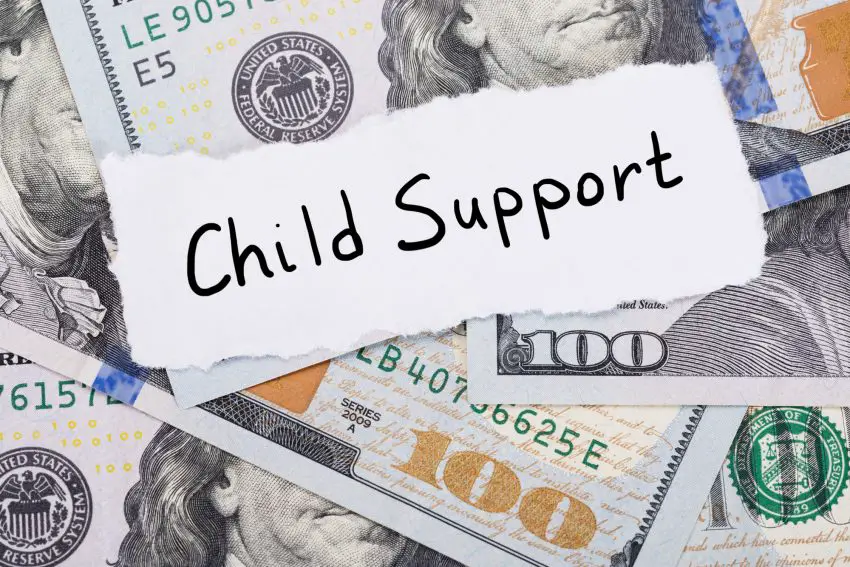In 2018, only 43.5% of custodial parents received the total amount of child support payments from noncustodial parents. The truth is, if the balance of the money you owe for child support reaches a certain threshold, your state may intercept your tax refund and apply it to your balance. This is due to the Federal Tax Refund Offset program, run by a wing of the IRS. However, it’s understandable that you don’t want the government to pay your child support with your tax refund. In that case, keep reading to learn “How To Stop Child Support From Taking Tax Refund”

Contents
The Treasury Offset Program (TOP) Explained
If you owe child support, your state’s child support enforcement office may report you for overdue child support to the Treasury Department.
The Offset Program collects past-due debts that people owe to state and federal agencies. This includes child support payments.
The Program matches people and businesses who owe debt with money that federal agencies are paying, like a tax refund. When a match happens, TOP withholds money to pay off the debt.
If the federal government receives a request to withhold the money, you cannot petition them to ignore the request. Thus, you must try to prevent the request from happening in the first place.
You risk a tax intercept and the money going toward child support payments if you don’t.
Will I Know if I’m Losing My Tax Refund to Child Support?
Yes. The Financial Management Service division of the Treasury Department will send you a notice in the mail. The notice will state there is a proposed tax refund seizure.
As soon as you receive this notice, you want to decide on your course of action, so you don’t face any child support deductions.
Of course, the best way to avoid receiving notice of an IRS Tax Refund Seizure is to pay child support on time. But, we know this is not possible for all.
If you’re worried that you may be losing your tax refund to child support, first look up your state’s threshold for a tax interception.
Threshold for Interception
Each state should have its threshold listed online.
The federal standard for tax interception is either $150 or $500 in arrears depending on your status. Arrears is the money you owe or debt.
If you’re under the Temporary Assistance for Needy Families (TANF) Program, your threshold is $150 in arrears. If you’re not under TANF, your threshold is $500.
Yet, in many states, the threshold is one month of child support plus this amount. That’s why it’s best to consult your state’s resources to see what its threshold is.
If you’re up-to-date with your child support payments or owe less than the threshold, you don’t have to worry about a tax intercept from the government.
What Do I Do If I Owe More Than The Threshold?
If you already know you owe more than the threshold or receive an IRS proposed tax refund seizure notice, you want to contact your local child support program or human services. You can ask them if they will report you or apply for an offset.
Contacting them will not add a penalty to you. But, it could help you avoid receiving an offset. Your state is the only one that can confirm if they will intercept your tax or not. Additionally, this is only after you file your taxes for the fiscal year.
You want to contact them 3-6 months before you have to pay your taxes. Then, contact them again after you pay off enough of your arrears and are below the threshold.
Again, it’s crucial to contact your state as soon as you suspect you may lose your tax refund. Even if you haven’t received an IRS proposed tax refund seizure notice yet, but know you owe more than the threshold, contact them.
Once your state submits a request to the Offset Program, you cannot stop your tax refund from going toward child support.
If you fail to act, you will receive another notice in the mail letting you know the government will intercept your tax refund. You will receive this notice about 60 days before it happens.
Receiving this second notice means it’s too late to stop the interception.
Is Legal Recourse Possible?
Yes. If you’re unsuccessful in stopping the offset, you can try to file a court order. A judge may be able to prevent the offset for you.
Many states allow for this. You can also ask the court to prohibit the offset in your next child-support-related case. But, you need to justify your request. Simply asking to stop the offset is not enough, so prepare a valid reason ahead of time.
Remember, you only have 60 days to take legal action. Once you receive the final notice, the federal government will disburse your money at the end of those 60 days.
What Are Other Legal Options Available?
Aside from filing a petition with the court, there are a few other legal steps you can take to try to stop Stop Child Support From Taking Tax Refund. Let’s see what’s available.
Uncontested Modification
Uncontested modification is a mutual agreement between you and the child’s other parent to adjust child support conditions. Adjusting future payments may allow you to catch up on the amount you owe.
The adjustment doesn’t need to be permanent but could give you time to pay enough to be under your state’s threshold. However, you still need to catch up on your arrears before the government disburses your funds.
To file an uncontested modification, you and the other parent need to fill out court forms and submit them together to the city or county court.
If you already have a lawyer, they can help you with this process. They will file all the paperwork correctly for you.
Contested Modification
If the other parent to your child doesn’t agree to change the payment, you could also file a contested modification. This process is different by state, so it’s best to seek legal advice.
But usually, you can fill out a form and ask to see a judge at your local court.
Then, you and the other parent will need to appear before the judge and plead your case. You will explain why you want to reduce the payments, and the other parent will explain why they don’t want to reduce the costs.
When speaking to the judge, don’t mention your tax refund. You are unlikely to win your case if you do. It’s necessary to have a valid reason to reduce your monthly child support amount. Some examples are:
- A diminished income for reasons beyond your control
- Extraordinary circumstances that stop you from paying
- The payments are causing an undue burden on you
As with an uncontested modification, if you win your case, you will have some time to catch up on your arrears. However, you still need to pay off or get below the threshold before those 60 days end.
Injured Spouse Claim
If you’re married and jointly file taxes with your spouse, you can try filing an Injured Spouse Allocation (IRS Form 8379) request. With this form, your spouse tells the government that the child support payment isn’t their debt and, therefore, not their responsibility.
If successful, the government will lay off a percentage of the refund.
If you plan on taking this route, you need to fill out Form 8379 before you file your taxes. This way, the government will process the claim before the state can respond to the tax interception.
Chapter 13 Bankruptcy
Filing for Chapter 13 Bankruptcy is a last resort for those really struggling. No one should take this consideration lightly.
The bankruptcy code will not erase your child support debt. But it allows you to restructure all the debt you owe and pay it over a 3-5 year period.
The code sees child support as a priority debt. This means it is paid before other debt.
If you think you need to file for bankruptcy, consider seeking out legal assistance if you can.
Paying Down Your Debt
As mentioned, the best way to avoid losing your tax refund to child support is by paying down your arrears. Even if you cannot pay the total amount now, paying as much as possible is best.
If this means you need to take on a second job, find freelance work, or cut expenses, do it. The debt will not go away, so you need to pay it eventually. The government doesn’t care if you use current wages or your tax refund to pay your arrears.
Eventually, they will come for the money you owe.
If you’re still having difficulty paying the amount, consider reaching out to a debt reduction program in your area.
There are state- and city-based government programs to help you reduce your debt and pay child support.
Avoid Paying Child Support With Your Tax Refund
While it may not be ideal to pay child support with your tax refund, you will need to take action to prevent this from happening should you owe more than your state’s threshold.
If you’re in this situation, work through the options listed here and choose what is best for your circumstances. Hope you liked our article “How To Stop Child Support From Taking Tax Refund” and found it helpful.
For further questions on saving money, We have great resources to help you with taxes, business, and finance. See our Learn More Section
Learn More
Can You Sell a Property With a Tax Lien?
Bankruptcy and Taxes: All you Need to Know





